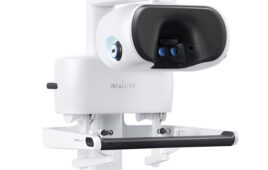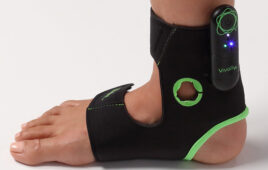
Photo by Erik Fitzpatrick, via Flickr under Creative Commons license.
Stericycle Expert Solutions recently conducted a five-year assessment of recall trends, based on its quarterly Recall Index studies. The results show surprising missteps from medical device companies, especially where software is concerned.
We asked Chris Harvey, director of recall solutions at Stericycle to answer some questions about the recall trends and offer some advice on how to navigate a recall effectively.
MDO: What does the medical device recall environment look like today?
Chris Harvey: In our five-year assessment of recall trends we found that technological advances in medical devices have been the key cause of recalls over the past five years. That’s because as manufacturers rushed to be first-to-market with the latest innovations, software issues triggered a significant number of recalls.
That trend continued in the most recent quarter. More than a quarter (25.7%) of all medical device recalls in Q4 2017 were due to software issues, making it the top cause for the seventh consecutive quarter.
Sterility issues were another leading factor. Five years ago the largest medical device recall was nearly twice the size of that in 2017, caused by a single sterility-compromised product that resulted in 102 million devices being recalled. By comparison, the largest medical device recall in 2017 was 54 million units, also caused by sterility problems.
One concerning trend today, however, is the rise in Class I recalls, which are those that pose the most serious adverse health consequences to patients. Class I-level medical device recalls have increased steadily over the past three years in particular, with an average of 500,000 recalled units each quarter in 2017.
MDO: How have recalls changed over the last five years?
Chris Harvey: Perhaps the biggest change has been the impact of the internet of things (IoT) as it applies to medical device recalls. Products are simply getting smarter and are more often equipped with sensors and wireless connectivity.
While these technological advances introduce a new kind of recall risk by potentially making medical devices vulnerable to hackers, they can also significantly improve and accelerate the recall process. Smart, connected devices mean that in certain instances, medical device manufacturers may be able to bypass the notification step of a recall (and thus much of the negative publicity) by sending out a fix in the form of an over-the-air software update. We’re already seeing this play out with success in the auto industry.
The use of unique device identifications (UDIs) and electronic health records (EHR) has also changed the nature of medical device recalls in recent years. The FDA introduced stricter regulations for UDIs, making vital product information more detailed and accessible than ever before. Things like device lot number, serial number, manufacture date, and, when necessary, the device’s expiration date can be accessed via barcodes quickly and easily. If a recall hits, health care providers can electronically search inventory with the right UDI data.
But that’s only half the battle. For patient-level recalls, the next step is to locate individuals with the affected devices. Patients need to be notified of any care plan changes in a timely manner. In theory, it should be easy to trace UDIs back to patient records, but the technology for managing EHRs hasn’t caught up with the new UDI system. Providers will need to update their inventory management systems in order to utilize UDIs effectively. Taking immediate action is challenging when the patient systems aren’t up-to-date.
Because most health care providers don’t have the necessary equipment for recording UDIs in their system, early adopters of effective UDI management will be in a highly strategic position when recalls occur. The potential exists for UDIs to dramatically improve patient care, so long as stakeholders have the proper technology and procedures in place.
The last big change stems from recalls that end up causing a critical shortage. These kinds of recalls are putting medical device manufacturers in a unique position. Not only do they have to maintain compliance—they also have to wrestle with the benefit-risk scenarios of whether to pull their products off the market. The public health concerns of limiting product availability mean that medical device recalls must be handled with particular care. Recent draft guidance from the FDA states that “enforcement decisions that affect product availability should generally include consideration of specific factors.” Because medical device shortages are so complex, the FDA urges manufacturers to carefully evaluate their situation before initiating a recall.
MDO: How can med-device companies approach FDA to establish a good working relationship to make recalls more efficient and effective?
Chris Harvey: When a medical device company is about to initiate a recall, regulators may seem like the enemy – ready to pounce on the slightest misstep. But the reality is usually very different, and this defensive attitude can actually make the situation worse. A better approach is to work closely with regulators and position your company as a partner, rather than an adversary.
The key is to be proactive. FDA regulations state that manufacturers are required to report a product for recall to the FDA within 10 working days if it involves a risk to health. Complying with this timeliness demonstrates to the FDA that you are committed to making the recall as effective as possible. Manufacturers experiencing a recall need to overcome the fear and distrust of regulators and embrace their role in helping to make the process go as smoothly and effectively as possible.
It’s also important for device manufacturers to understand that the FDA is their best communications partner when it comes to getting the word out about a recall. The FDA has recently stepped up efforts to increase transparency and is working to alert the public sooner whenever a product has been recalled, largely through its weekly, web-based Enforcement Report. It has also started posting early summaries of correction or removal actions involving serious problems in its Medical Device Recalls Database. Medical device manufacturers should work closely with the FDA in providing all the essential information needed to make this communications effort effective.
MDO: What steps should a firm follow?
Chris Harvey: The first step is to move quickly. One of the most common mistakes medical device manufacturers make is also one of the worst: waiting too long. Manufacturers need to understand that alerting the FDA of a potential issue doesn’t always trigger a recall. And if a recall is necessary, it almost certainly can’t be avoided, only delayed. This can lead to distrust, additional scrutiny, or hefty fines. Reporting the hazard quickly demonstrates to regulators a company’s concern and commitment to making things right, and there is no better way to begin the relationship.
The next step is to be transparent, as mentioned earlier. No matter how quickly a manufacturer tells the FDA about the issue, it won’t help them if they aren’t upfront about the true nature of the situation. Now is not the time to spin or sugarcoat. They should keep in mind that they’re not the first manufacturer to go through this. They should be prepared to divulge the potential hazard and how it was discovered, the likely scope and scale of the issue, and any reported injuries or adverse reactions – even if it is unclear that the product is the true source of those reports.
Developing a notification plan is another important step. The number one concern in any potential recall situation is consumer safety. To protect the public, a comprehensive notification plan is necessary. Direct notification only to those impacted is best, but when that is not possible, widespread announcements are necessary. The FDA expects to see a plan that meets, and ideally exceeds, its requirements.
Once a plan is in place, make sure your actions match your words. A good plan is meaningless without follow-through. To be seen as a true partner in a recall, device manufacturers must act on their plans efficiently, knowing that the FDA will be watching closely – even looking at response rates to determine whether additional steps are necessary.
Another important step is to offer an appropriate remedy. Some manufacturers may see if a short-term repair or modest refund suffices. The FDA may reject these proposals right from the start. In other instances, manufacturers are forced to expand or alter remedies when the first ones prove insufficient. On top of the consumer safety implications, these manufacturers may be obligated to re-announce the recall several times, exposing them to even more scrutiny. Instead, they should consider the perspective of their customers. What remedies would make it clear that the recall is serious? By looking at it from the healthcare provider’s or consumer’s point of view, manufacturers will be better able to satisfy regulators as well.
Lastly, know the mandates – or work with someone who does. When it comes to FDA compliance, the devil is in the details. This is often the greatest source of apprehension when a manufacturer faces a recall. Even small, geographically limited recalls involve highly complex regulations. When recalls expand to a nationwide or even global level, the complexity is compounded. Every form, piece of data, and step in the process must be managed with painstaking care. That requires a thorough understanding of mandates from the various regulators who may be involved at every level.
MDO: How can industry help make FDA’s process better for the long-term?
Chris Harvey: All stakeholders have a shared goal of improving the process, increasing response rates, and putting patient safety first. Transparency and information sharing are key – not only when it comes to making recalls as effective as possible, but also in helping prevent safety issues from arising in the first place. In the case of cybersecurity, Information Sharing Analysis Organizations (ISAOs) have been developed specifically for this purpose. In addition, the FDA actively seeks input from manufacturers and other stakeholders in developing new guidance, so it is important for companies to continue to provide that feedback. As technology continues to advance, the process will have to adapt to meet those changing needs. It is crucial for all stakeholders involved to work through those developments together.





![A photo of the Medtronic GI Genius ColonPro polyp detection system flagging a potential sign of colon cancer during a colonoscopy. [Photo courtesy of Medtronic]](https://www.medicaldesignandoutsourcing.com/wp-content/uploads/2024/04/Medtronic-GI-Genius-doctors-268x170.jpg)



Informative article. Technology is changing and growing at a very rapid pace. The internet of things carries great responsibility with devices.